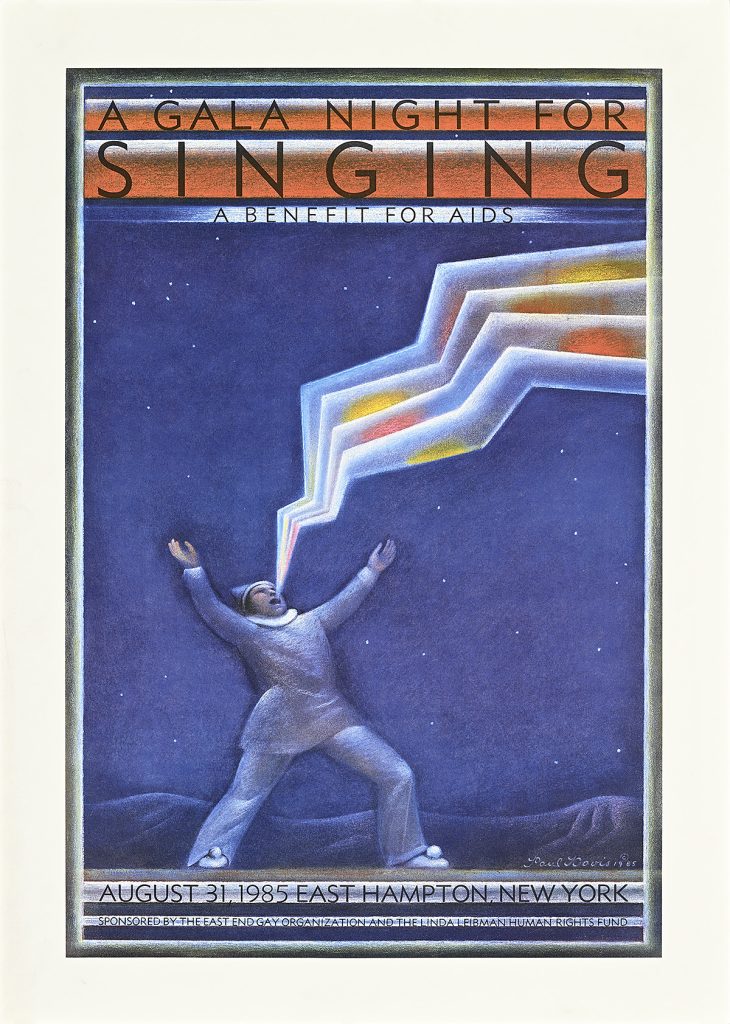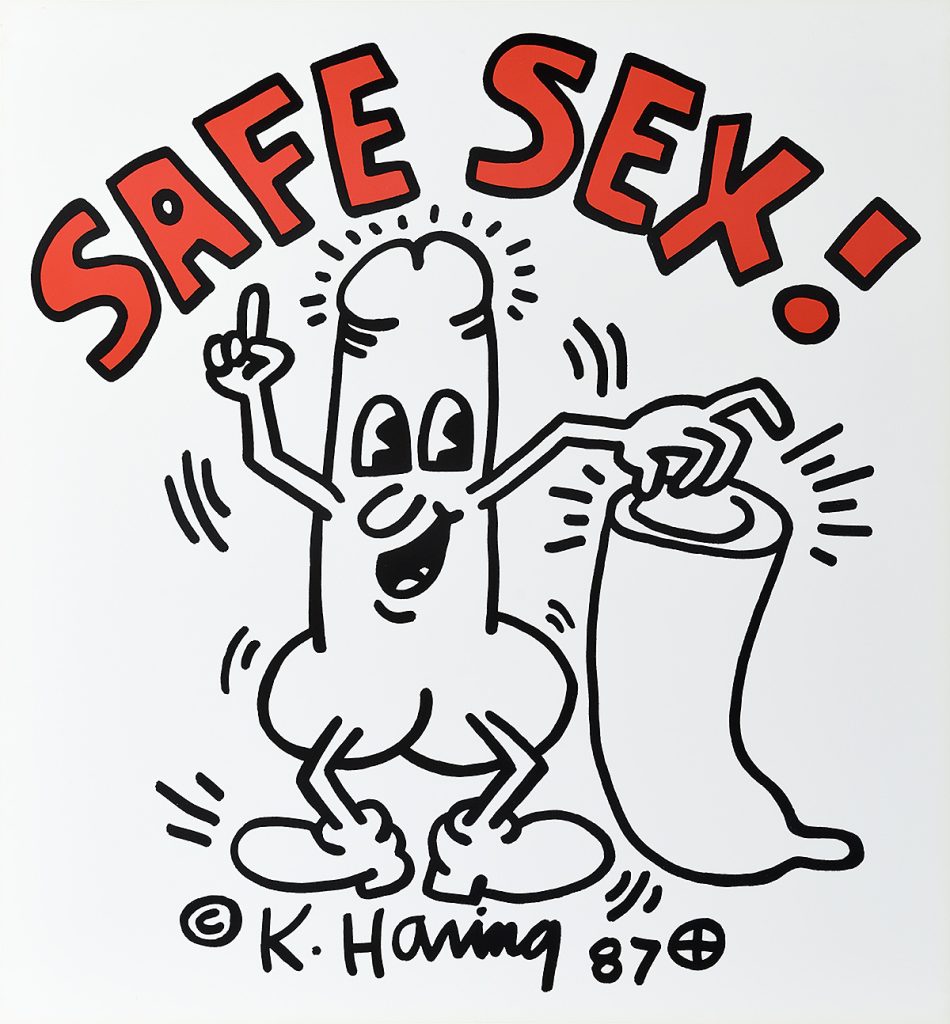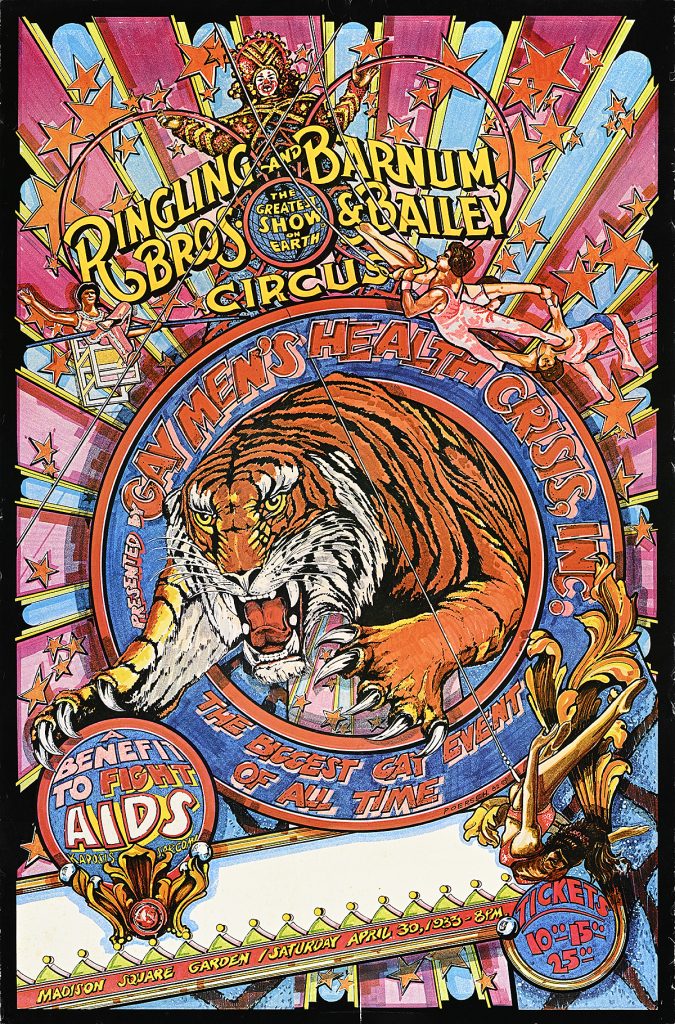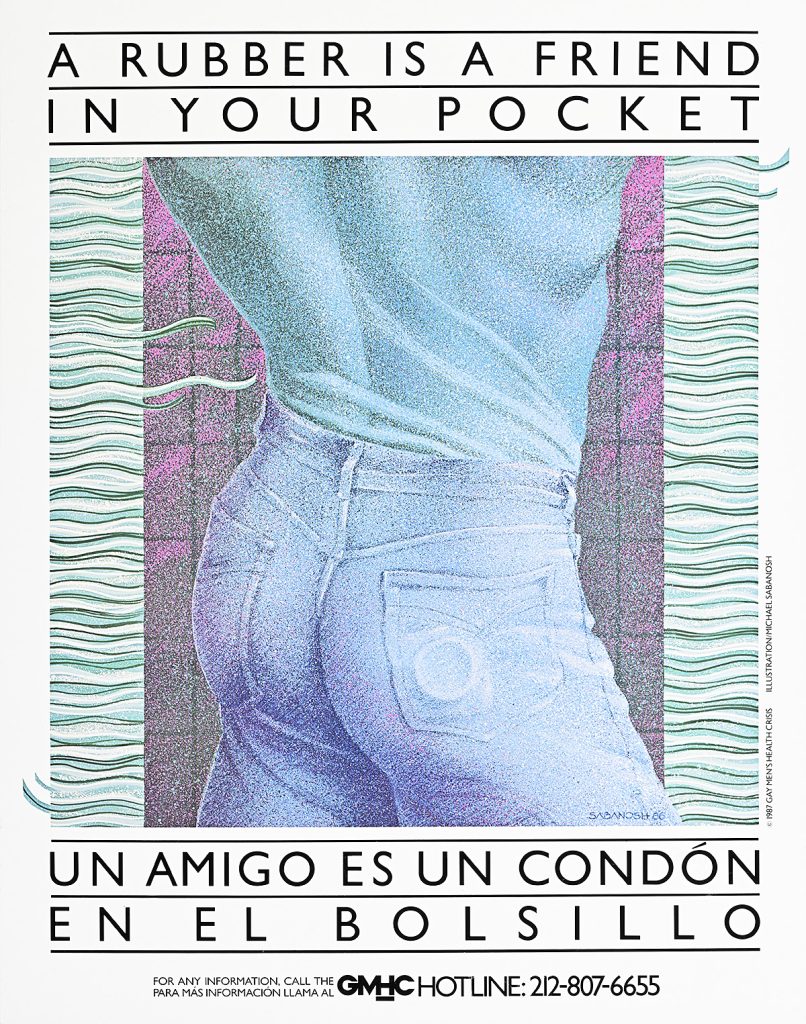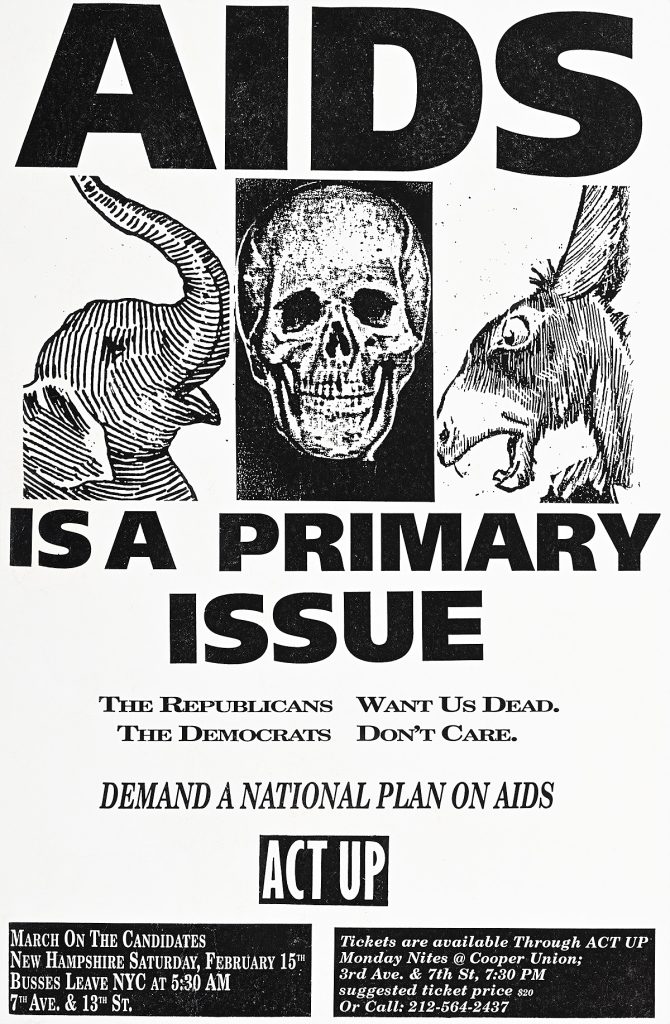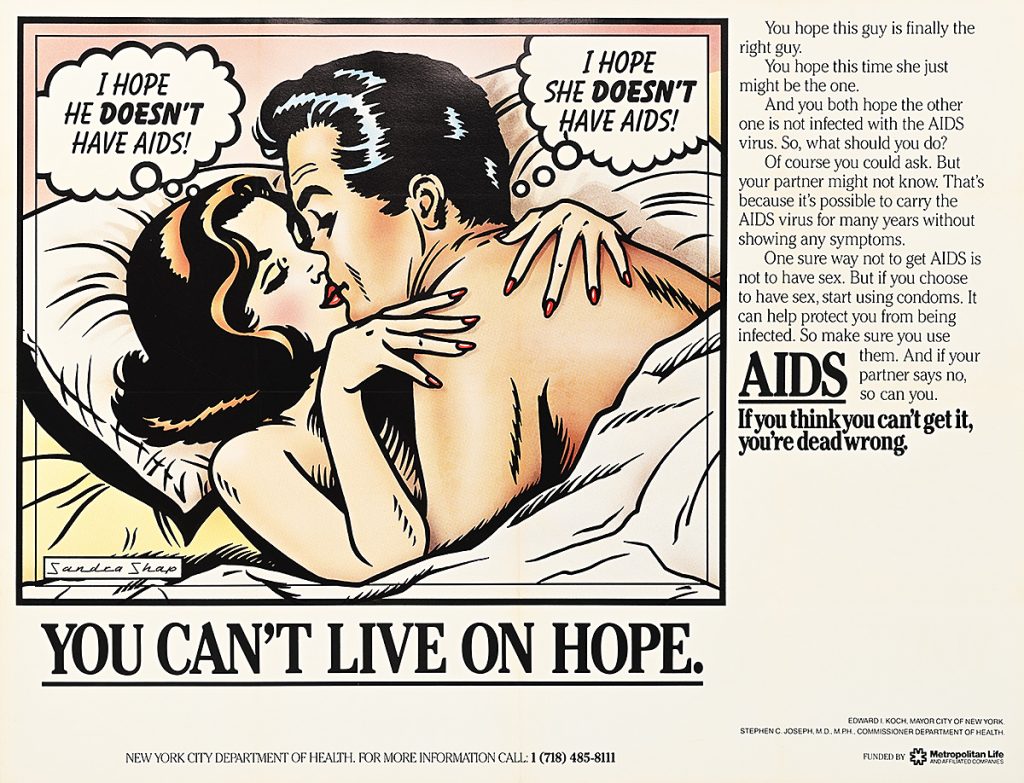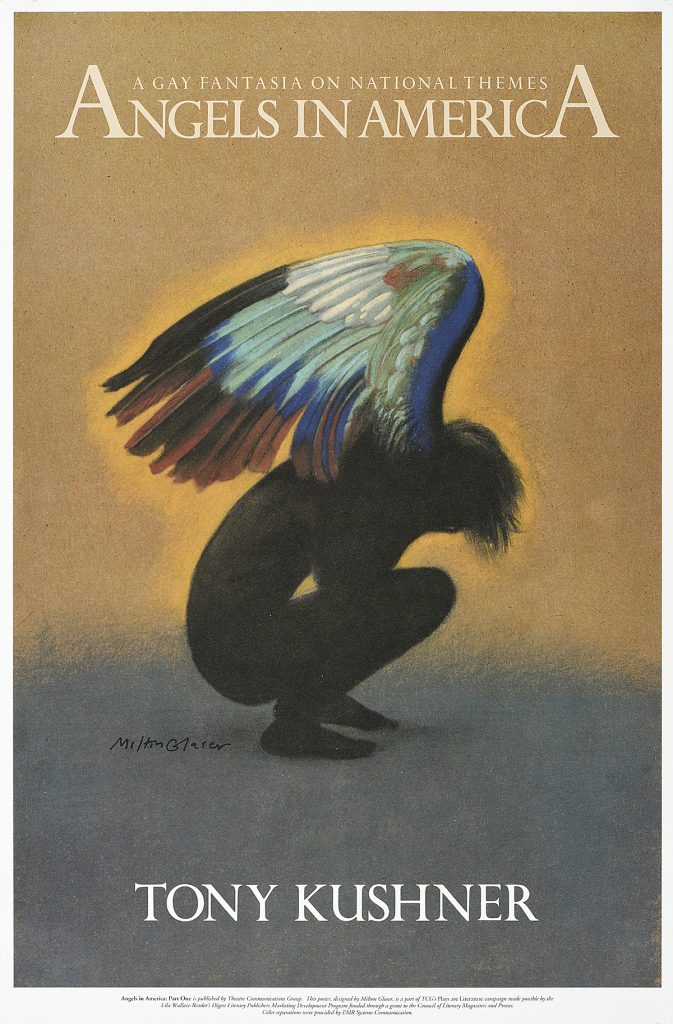Love & Fury: New York’s Fight Against AIDS
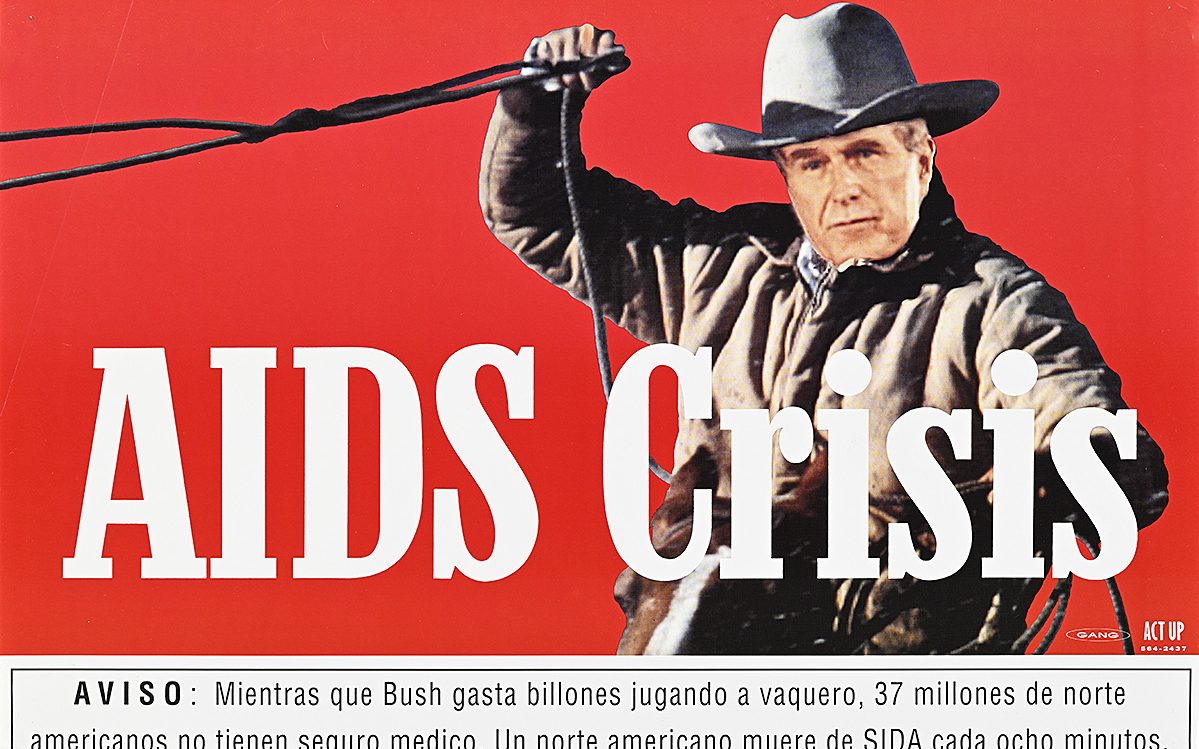
In the late 1970s and early 1980s, clusters of rare illnesses began appearing among young, otherwise healthy gay men in New York, Los Angeles, and San Francisco. Doctors, activists, and affected communities noticed the pattern before public health authorities did.
Initial confusion was compounded by stigma: early names like GRID (Gay-Related Immune Deficiency) framed the epidemic through homophobia. In 1982, the CDC officially named the syndrome AIDS (Acquired Immune Deficiency Syndrome). As the death toll mounted, New Yorkers organized in the absence of state response—forming the Gay Men’s Health Crisis (GMHC), publishing community bulletins, and launching the first waves of self-determined care and advocacy.
When AIDS hit New York, posters spoke where institutions stayed silent. In a city wired for visual competition—crowded streets, subway ads, nightclub flyers—posters became lifelines. They were how people found clinics, mourned the dead, demanded justice, and fought for the living.
This exhibition explores how graphic design shaped New York’s grassroots response to AIDS from 1979 to 2003. Public health campaigns, agitprop, benefit flyers, and club handbills offer more than messages—they map how communities built survival systems from below, often before the state would act.
Ian Bradley-Perrin is a historian of HIV/AIDS in the United States whose work bridges scholarship, activism, and curation. He contributed to Up Against the Wall: Art, Activism, and the AIDS Poster at the Memorial Art Gallery and developed his dissertation, “A Consumer’s Epidemic: People with AIDS and the Politics of Consumption,” on the first five years of the AIDS response by People with AIDS. He has worked at AIDS advocacy organizations in Canada and the United States and is currently a Senior Scientist supporting HIV treatment and prevention clinical research. Bradley-Perrin earned his PhD in Sociomedical Sciences and History from Columbia University and has lived with HIV for over 15 years. His scholarship and lived experience inform his approach to curating and interpreting the history of AIDS.
This program is supported, in part, by public funds from the New York City Department of Cultural Affairs in partnership with the City Council, and the New York State Council on the Arts (NYSCA).
![]()
![]()
